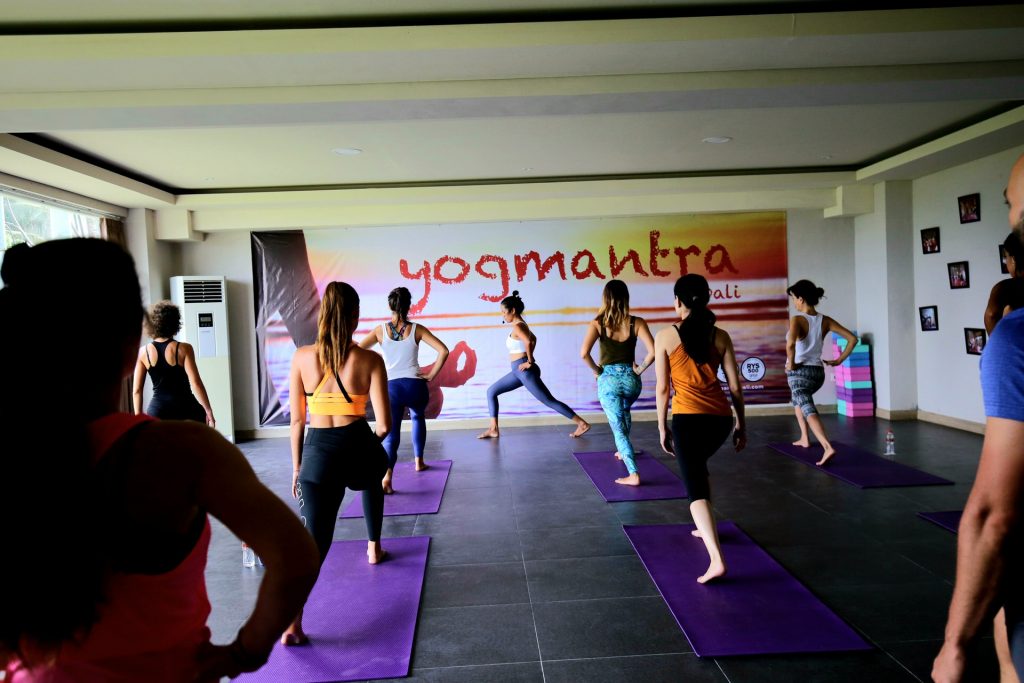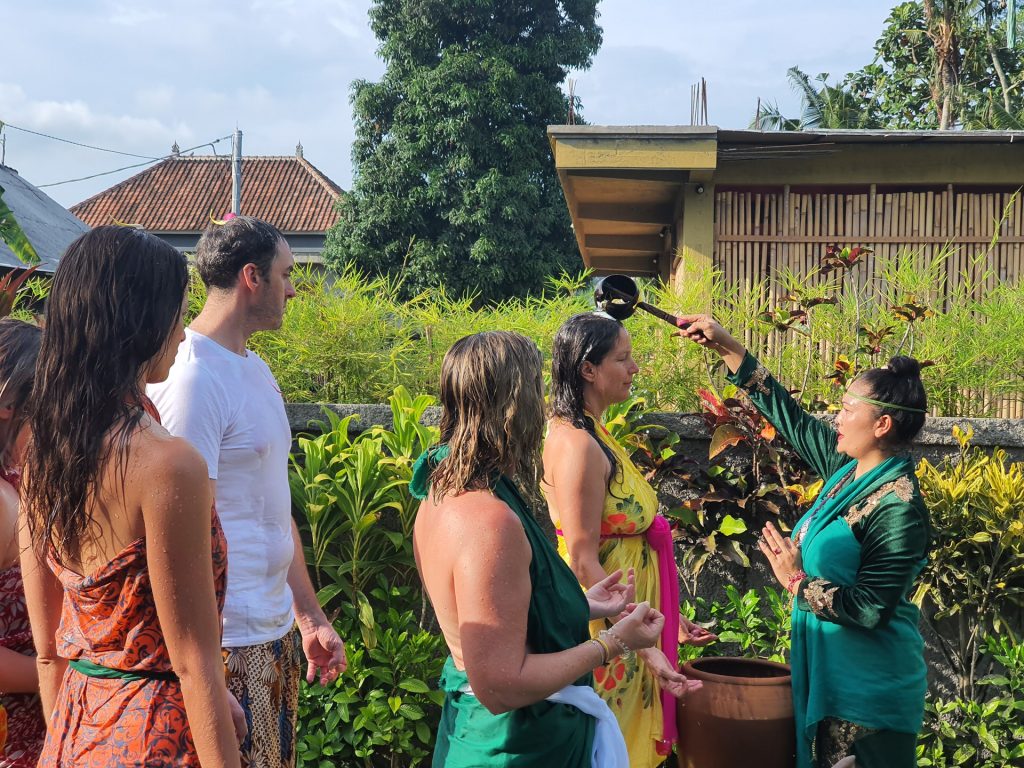As sunlight spreads across Bali’s lush scenery, a gentle wind carries ancient wisdom’s whispers and a transformative day’s promise. Here, where each dawn paints tranquility’s portrait, yoga’s ancient art finds resonance in its very essence. Bali’s vibrant tapestry—culture, spirituality, and natural splendor—beckons seekers to experience yoga authentically, transcending mere practice.
Amidst serene paddies and tranquil shores, yoga becomes self-discovery’s pathway. Every breath is a lesson. Each movement is life’s celebration.
And as we explore Bali Yoga Teacher Training’s cost and value, let us immerse ourselves in the possibilities of these sacred lands, where transformation awaits at every turn.

The appeal of Bali
Bali is known as a place for yoga training due to its spiritual energy and nature’s beauty. This island is called the Land of the Gods and offers a calm, inspiring space perfect for learning yoga better. Bali’s culture is connected to spirituality, making it ideal for personal growth while practicing yoga.
Green areas like rice fields and beaches help people connect with the outdoors, enhancing yoga’s mind and body practice. Bali’s warm community and peaceful feel draw yoga fans worldwide, seeking more than physical fitness—a meaningful, life-changing experience.

Understanding the costs – Yoga Teacher Training Cost in Bali?
Yoga teacher training costs in Bali can vary depending on factors like the duration of the course, the location, and the amenities offered. Generally, you can find courses ranging from a few hundred to a few thousand dollars. In Bali, some affordable options provide comprehensive training for around a thousand bucks, covering yoga postures, pranayama breathing, meditation practices, and hands-on experience.
The cost of yoga teacher training in Bali offers various options. The Yogmantra Bali 200-hour Yoga Teacher Training course has different pricing tiers. A sea view room costs $1,500, while a sea view room with a private balcony is priced at $1,600. These fees cover yoga training, accommodation, meals, and other enriching experiences. It’s an all-inclusive investment for personal and professional growth in yoga.
Sea View Room$1600$1,500 USD
Reserve yours now for just $225
Sea View Room with Balcony$1700$1,600 USD
Reserve yours now for just $240
Varieties of Training Programs
Beginner yoga teachers can find 200-hour trainings in Bali. More advanced students opt for 300- or 500-hour courses. Programs encompass Hatha, Vinyasa, and modern yoga styles. They cover yoga concepts, body structure insights, and instructor methods. Every yoga aspirant discovers a suitable path among the diverse curricula. Search training provider websites for available sessions.
Bali houses a vast array of yoga teacher training opportunities. They cater to varied experience levels and needs. Foundational 200-hour programs are perfect for novices or dedicated practitioners. Advanced 300- and 500-hour courses exist for selected yogis. Each training offers a distinct specialization—traditional practices like Hatha or Vinyasa or contemporary approaches. Supplementary elements include yoga philosophy, anatomy studies, and teaching techniques. The breadth ensures an aligned match for every aspiring instructor’s personal and professional goals. Refer to individual training organization websites for detailed program offerings.
- Course Levels: Ranging from 200-hour foundational programs to advanced 300- and 500-hour courses.
- Yoga Styles: Options include traditional practices like Hatha and Vinyasa, as well as more contemporary or specialized styles.
- Curriculum Focus: Courses cover practical aspects of yoga, yoga philosophy, anatomy, and teaching methodologies.
- Intended Audience: Programs cater to beginners, intermediate practitioners, or advanced yogis looking to deepen their practice or teach.
- Duration and Intensity: Course length can vary, affecting the intensity and depth of learning.
- Location and Setting: Courses are set in various tranquil locations across Bali, enhancing the learning experience.
- Certification: Upon completion, participants typically receive certification, qualifying them to teach yoga professionally.
Additional Expenses to Consider
When planning for yoga teacher training in Bali, consider these additional expenses:
- Air travel: the cost of flights to and from Bali.
- Visa fees vary depending on your nationality and the duration of your stay.
- Travel insurance is essential for covering unexpected events.
- Local Transportation: For exploring Bali outside the training center.
- Extra Meals and Personal Expenses: Dining outside the training center and personal shopping.
- Leisure Activities: Costs for additional excursions or activities in Bali.
- Communication Costs: Like SIM cards for local phone service or internet.
Value Beyond the Price
Bali’s yoga teacher training holds deep value. Going through it means exploring yourself. Each pose and quiet time reveal something new. It’s like an inner adventure, helping you grow. You join others who love yoga. You bond over shared interests and change. The training has a rich culture rooted in Bali’s spiritual roots. So your practice grows beyond just moving your body. It blends study, self-discovery, and cultural understanding. All this reaches into your heart and mind. It’s an invaluable experience that transforms you on many levels.
Conclusion
Yoga teacher training in Bali provides more than simply technical knowledge. It offers a transformative experience, blending Balinese culture’s beauty, yoga philosophy’s depth, and a global community’s warmth. This opportunity represents an investment in your personal growth and spiritual journey beyond solely your career as a yoga teacher. Against Bali’s serene landscape backdrop, this training surpasses typical learning boundaries, promising an enriching mind-and-soul journey.



